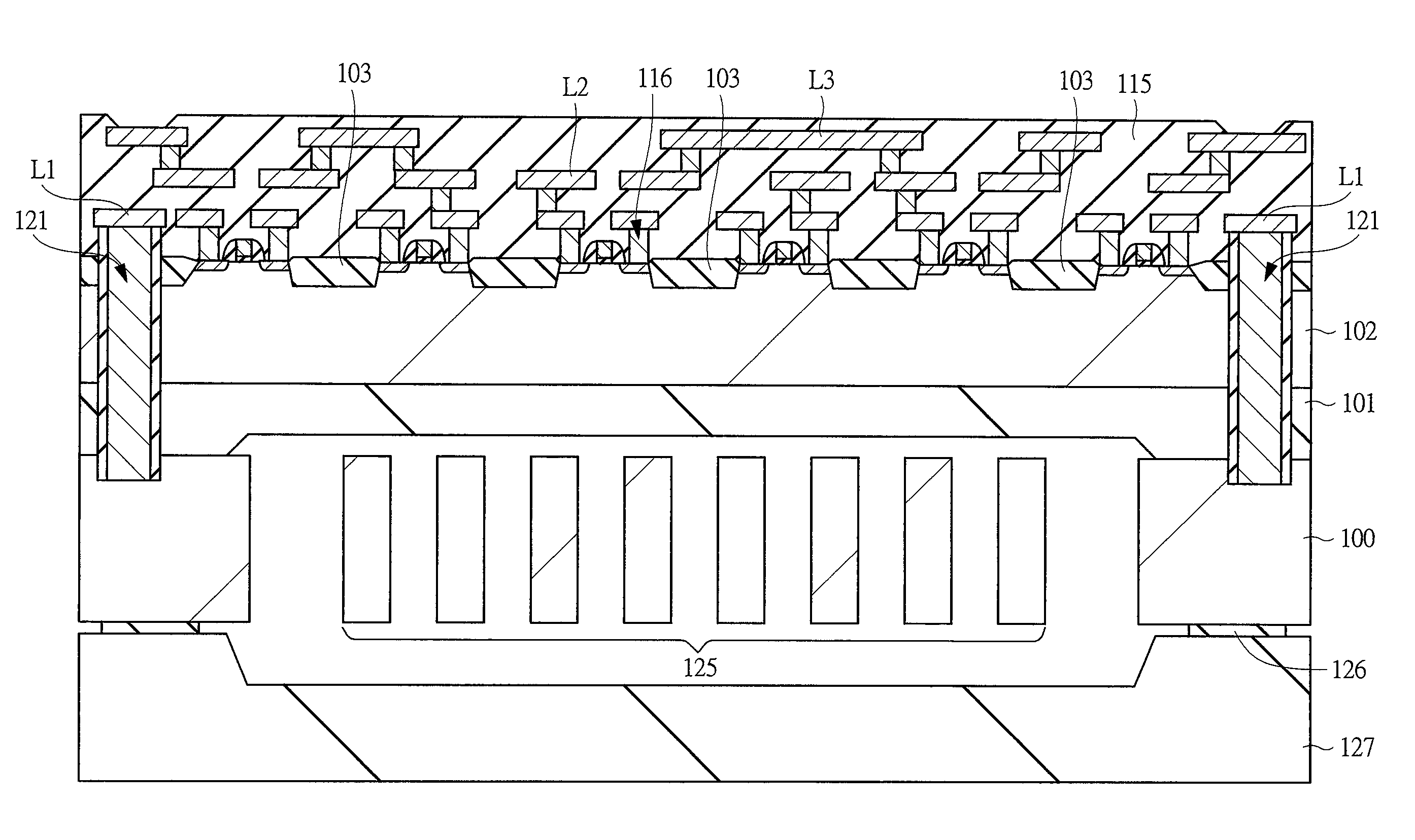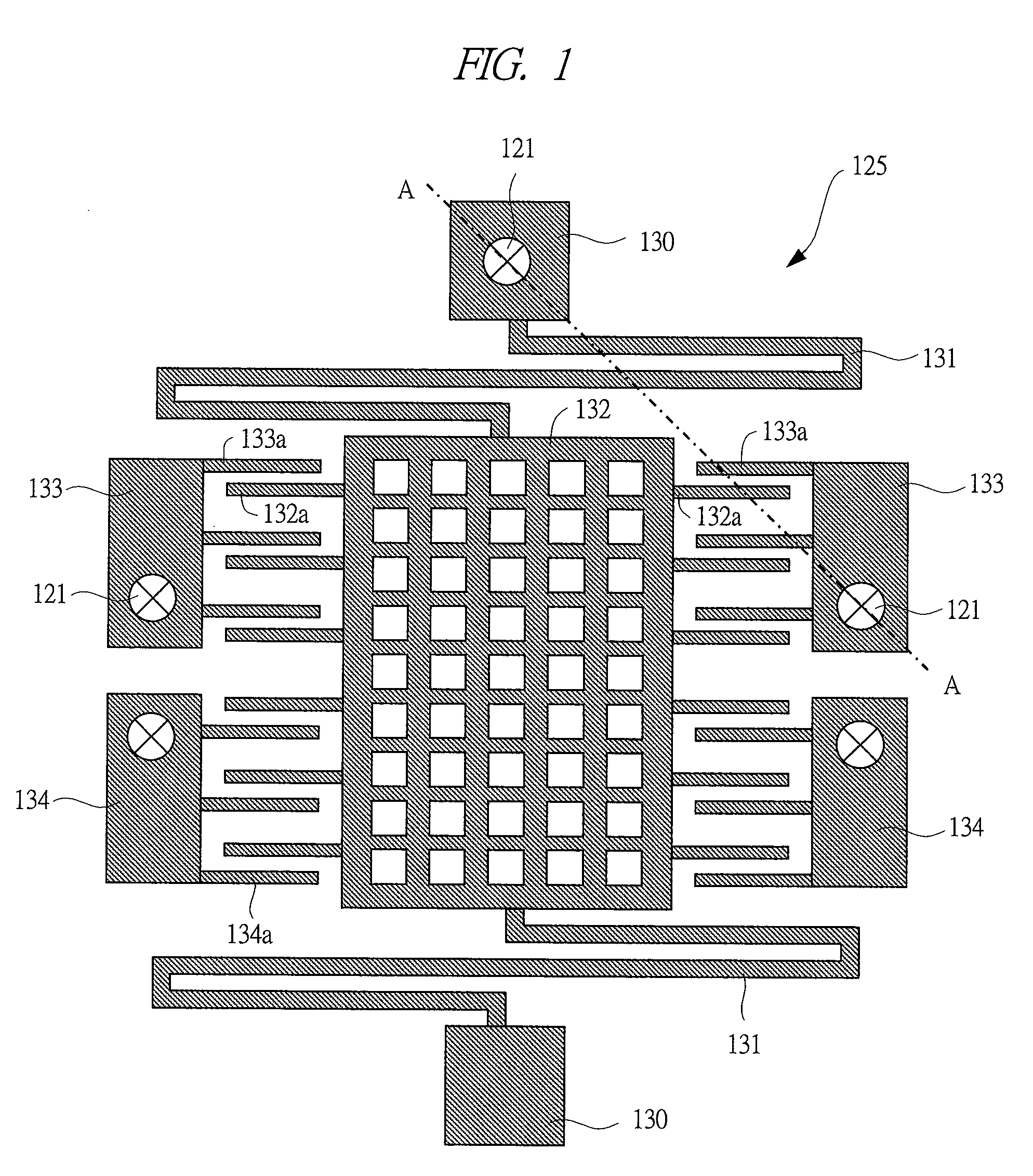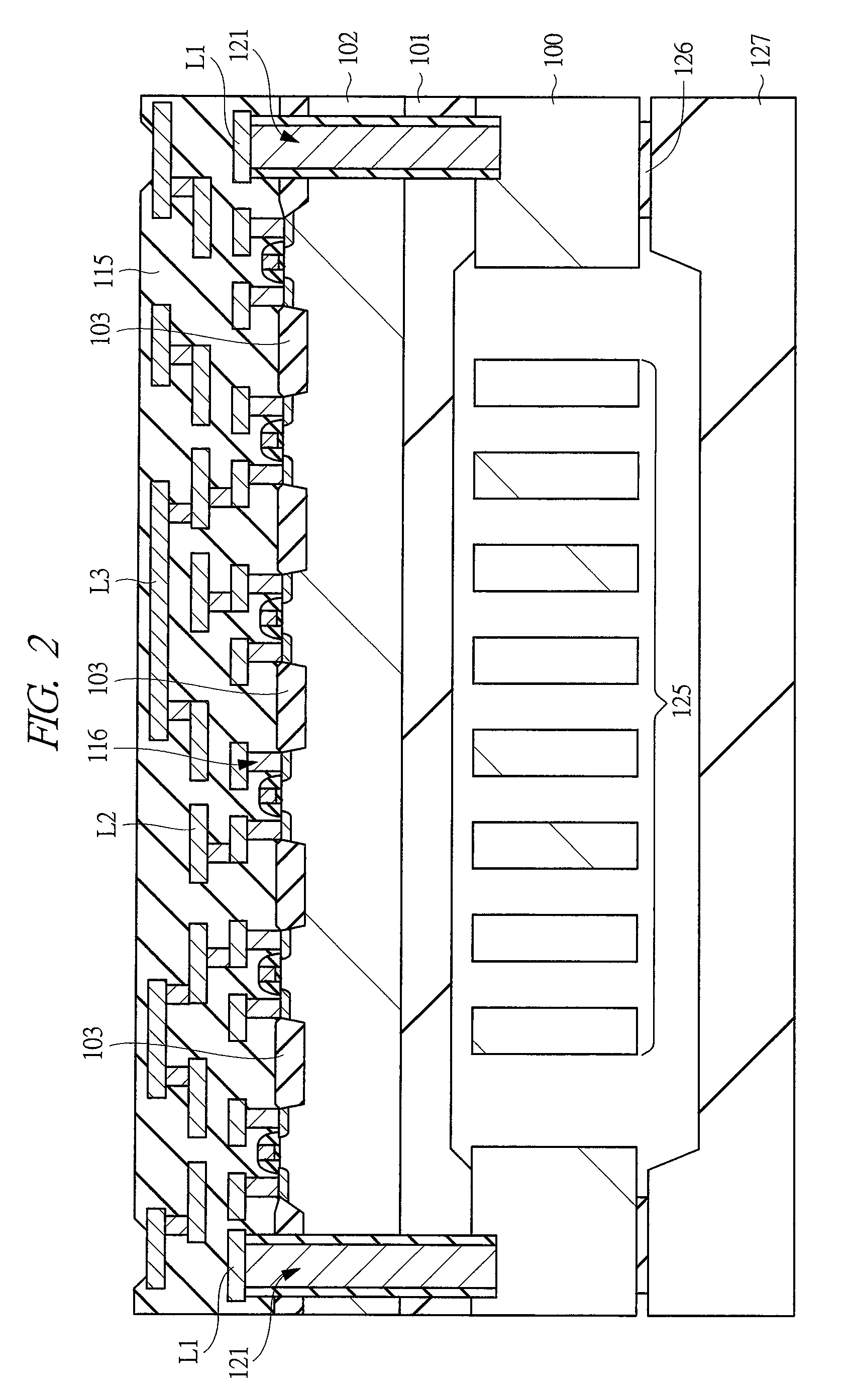Semiconductor device with integrated circuit electrically connected to a MEMS sensor by a through-electrode
a technology of integrated circuit and integrated circuit, which is applied in the direction of turn-sensitive devices, semiconductor/solid-state device details, instruments, etc., can solve the problem of limitless downsizing and achieve the effect of reducing thickness and downsizing
- Summary
- Abstract
- Description
- Claims
- Application Information
AI Technical Summary
Benefits of technology
Problems solved by technology
Method used
Image
Examples
first embodiment
[0060]A semiconductor device of a first embodiment will be described with reference to the drawings. FIG. 1 is a plan view showing a MEMS sensor according to the first embodiment. In FIG. 1, the MEMS sensor in the present first embodiment is, for example, an acceleration sensor. The MEMS sensor comprises fixing portions 130 formed on an SOI substrate and a structure 125 connected to the fixing portions 130. The structure 125 comprises beams 131, a movable mass 132, and detection portions 133 and 134.
[0061]The beams 131 are elastically deformable and connect the fixing portions 130 and the movable mass 132. Therefore, the movable mass 132 can be displaced when an external force is applied. The fixing portions 130, the beams 131, and the movable mass 132 are formed by processing conductive silicon, and are not only mutually mechanically connected, but also are electrically connected.
[0062]Movable electrodes 132a are formed on the movable mass 132 and constitute detection capacitor ele...
second embodiment
[0123]In a second embodiment, an example of using a substrate in which a plurality of buried insulating layers are formed as an SOI substrate will be described. The second embodiment is different from the abovedescribed first embodiment in a point that the SOI substrate in which the plurality of buried insulating layers are formed is used and a point that a plurality of through-electrodes having different connection destinations are formed in the SOI substrate.
[0124]First of all, a MEMS sensor of the second embodiment is an angular rate sensor. A configuration of the angular rate sensor will be described with reference to FIG. 18.
[0125]FIG. 18 is a plan view showing the configuration of the angular rate sensor which is the MEMS sensor. In FIG. 18, the angular rate sensor of the second embodiment has fixing portions 253 formed on the SOI substrate and the structure 125 to be connected to the fixing portions 253. The structure 125 has movable masses 250 and 251 and detection portions ...
PUM
 Login to View More
Login to View More Abstract
Description
Claims
Application Information
 Login to View More
Login to View More - R&D
- Intellectual Property
- Life Sciences
- Materials
- Tech Scout
- Unparalleled Data Quality
- Higher Quality Content
- 60% Fewer Hallucinations
Browse by: Latest US Patents, China's latest patents, Technical Efficacy Thesaurus, Application Domain, Technology Topic, Popular Technical Reports.
© 2025 PatSnap. All rights reserved.Legal|Privacy policy|Modern Slavery Act Transparency Statement|Sitemap|About US| Contact US: help@patsnap.com



